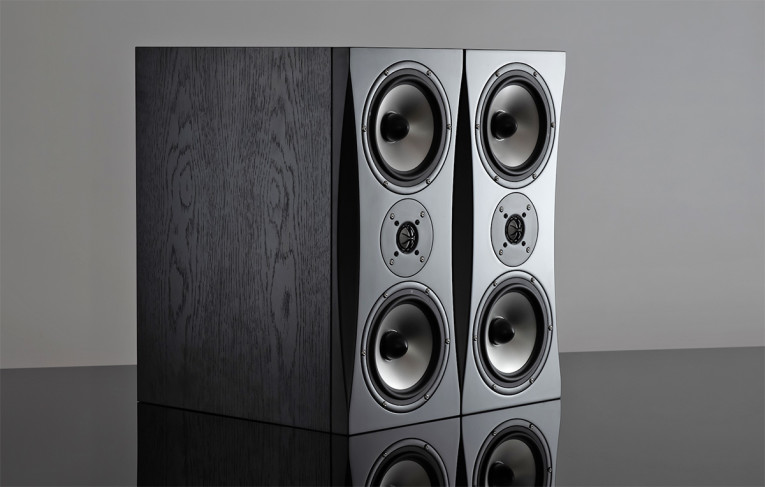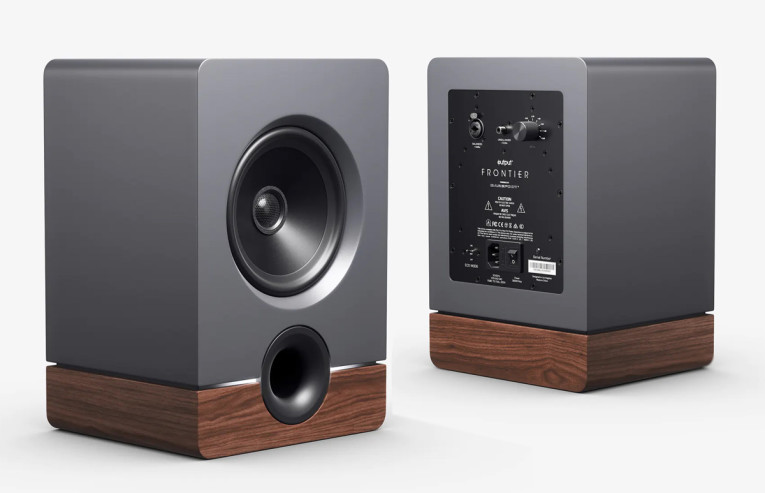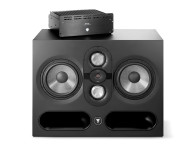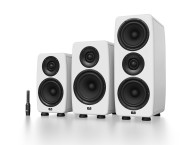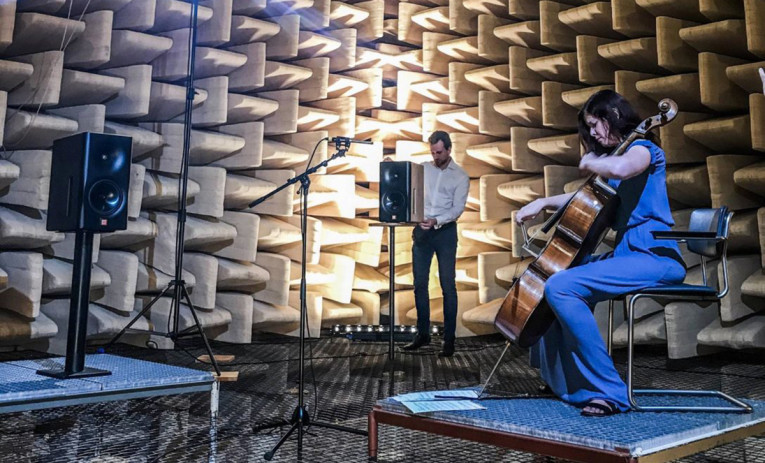
The first example is a new speaker that I learned about from a recent patent review that James Croft wrote for Voice Coil magazine’s February 2021 edition. This new speaker is from an obviously Dutch company from Rotterdam, named Dutch & Dutch. As Croft noted in his patent review, apparently their research shares the same engineering fundamentals and goals applied in another remarkable product with roots in The Netherlands (and Germany), Kii Audio's Three.
As audioXpress could demonstrate in its detailed review among their many innovations, the Kii Three speakers achieve extremely well-controlled directivity in the lowest frequencies. In our extensive 2017 review, audioXpress even measured the speakers directivity pattern at 100Hz, showing it to be an almost perfectly cardioid.
The Dutch & Dutch patented design used in its 8c speakers - the company's first and so far only product - also achieves directivity control all the way down to 100Hz. On its website, D&D mentions constant directivity with a "+/-0.5dB frequency response from 35Hz upward." The 8cs combine a proprietary waveguide tweeter with an acoustic cardioid midrange, rear-firing boundary-coupled bass drivers and DSP-controlled active room matching, allowing the speakers to be placed close to room boundaries. To achieve its cardioid response on the midrange, Dutch & Dutch designed two openings on the enclosure's side panels, introducing a phase delay that causes an effective attenuation (15dB or more) of the midrange frequencies.
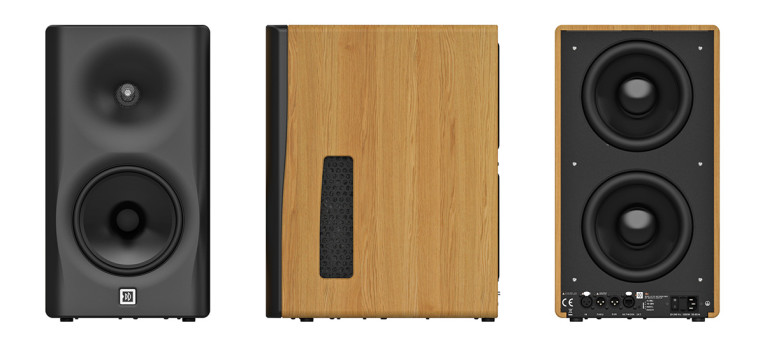
Characterizing the D&D 8c speakers further, the company says its design was meant to be both a high-end home hi-fi speaker and a main monitor in recording and mastering studios. The 8c uses two 8" high excursion woofers on the back of the cabinet, with one 8" midrange driver and a 1" alloy dome tweeter in the front of the sealed enclosure. The active design uses three Class-D amplification channels, with 500W on the two low-frequency woofers, 250W for the midrange and 250W for the high frequency. Also, much like the Kii Three, the 8c is a DSP-powered system in order to be tuned to the room, accepts high-resolution digital inputs (AES3) and it comes with room matching and network streaming capabilities out-of-the-box.
While Dutch & Dutch is one of those companies that had ambitious plans in 2019, it seems those were directly affected by the pandemic, delaying its promotion activities. And that’s one of the reasons I thought it deserved a mention now. There are also other examples of companies that have been working to develop or perfect their designs even under the current circumstances. From Output, a company located in the heart of Los Angeles, CA, which until now was focused on studio furniture and monitor stands (checkout their stunning sidecar design!), I received news of the new Frontier nearfield active studio monitors.
The thing that interested me the most was the fact that these are designed by Barefoot Sound, Thomas Barefoot's company that since 2005 has been designing and building loudspeakers and audio signal processing devices for studios. We've learned of a few Barefoot design collaborations previously - such as with Shinola, the Made-in-USA, lifestyle brand - and this Frontier design is clearly in line with that project, at least aesthetically.
Differently from Barefoot's black and white studio monitors visual identity, the Output Frontier features a solid walnut base that allows the natural wood grain to stand out (also making each speaker unique). Over that beautiful walnut base we find what would otherwise be a plain-looking grey cabinet, featuring what looks like a single aluminum cone woofer, but is effectively a 6.5"/1.25" time-aligned coaxial driver, with a forward-facing bass port. The assumption here is that home and project studios - which are the market for the Frontier - will place the monitors very close to walls anyway. These are shipped directly by Output, and are relatively affordable.
Update: at the time of writing these monitors were only available in the US. Now Output has distribution in Europe (Eusonic), New Zealand, Australia, Taiwan, South Korea, and Japan.
The third speaker I actually only learned about just in time for this newsletter. The design comes from O.S Acoustics, a relatively new company established in 2015 in the UK by Tom Osborne, a professional audio industry and loudspeaker design veteran. His research work in cooperation with two universities, was complemented with contributions from Christien Ellis (independent loudspeaker consultant) on the advanced FEA acoustic modeling. Their new product is the DBS8, a two-way active design in a sealed enclosure with an interesting MTM arrangement, which O.S Acoustics describes as an ultra-high-definition reference studio monitor with minimal frequency or time-domain distortions.
Meticulously designed to obtain the best possible performance from advanced materials and high-end components, the design philosophy for the DBS8 was to minimize any possible distortions, with Comsol simulations being used to optimize the cabinet structure, extensive vibration, and diffraction analysis, and validation of the internal bracing and overall design. The combination of the sealed cabinet and phase-corrected filters resulted in exemplary time-domain performance, according to the company.
The MTM driver arrangement configuration combines two 6.5" SEAS drivers, operating as a piston from the bass right through to the mid-range, with controlled dispersion of the high frequencies generated by a 28mm magnesium ceramic tweeter from Eton. A combination that the company evaluated extensively with measurements and listening tests, and is described as "the perfect recipe" for critical monitoring applications. Finally, the DBS8 system is DSP-controlled and powered by a Class-D T-Pro2 module from Pascal Audio, allowing users to choose from a selection of eight presets, each one with the option to enable or disable the FIR phase correction filter. O.S Acoustics DBS8 is now accepting orders and setting up international distribution.
